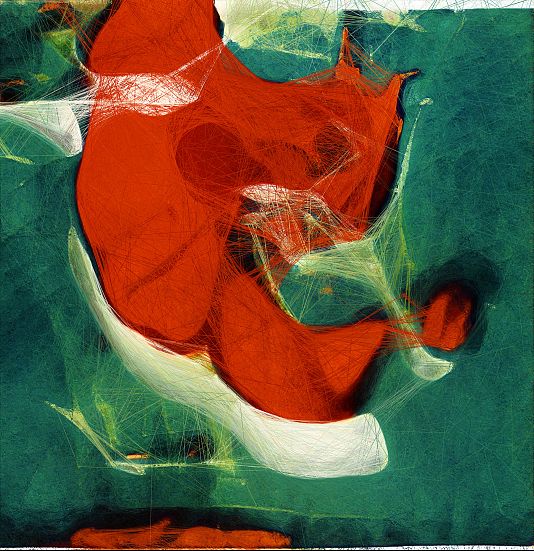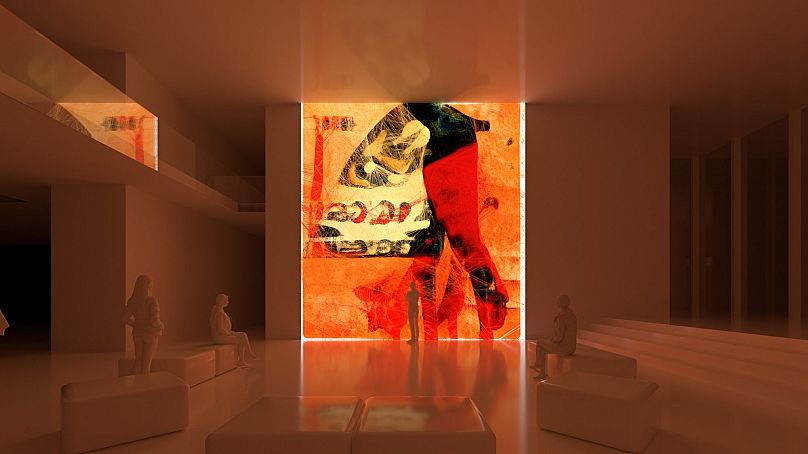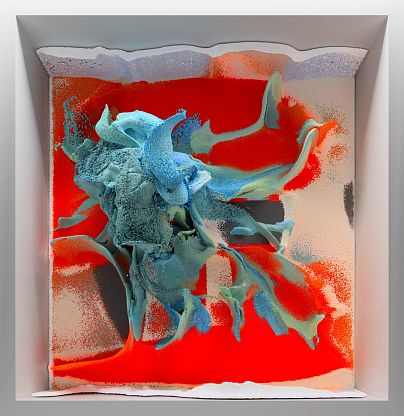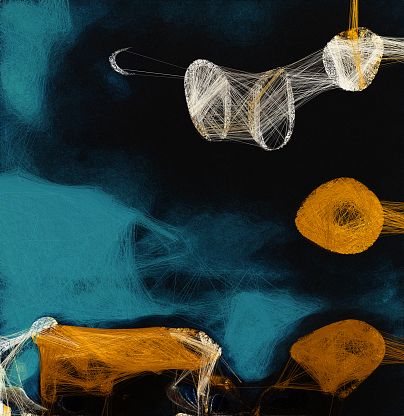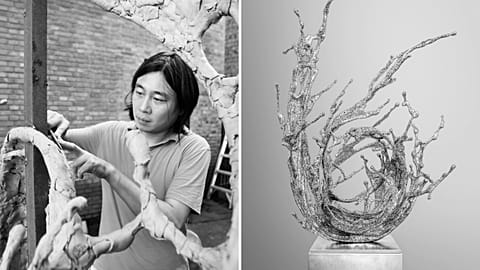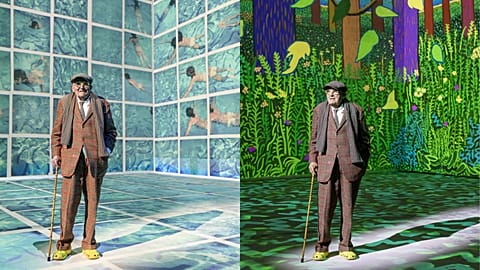Turkish-American artist Refik Anadol works with artificial intelligence to create "machine hallucinations," the subject of his first show at MoMA.
We know that machines can learn, but can they dream? What about hallucinate? And what would that even look like?
According to digital artist Refik Anadol, it could look something like this:
Anadol’s new exhibition Refik Anadol: Unsupervised, which opens this week at New York City’s Museum of Modern Art (MoMA), uses artificial intelligence to interpret and respond to 200 years of art history.
To create the collection, he and his team fed more than 138,000 images of individual works from MoMA’s archives - including paintings, performance art, video games and sculptures - into a machine-learning model.
That data was then plugged into another custom software that’s able to “listen, see and feel the climate of the museum and transform this data into a dream,” Anadol told Euronews Culture.
“Very fundamentally how it works is that AI can take any information, sound, image and text, and it can create alternative outputs from these inputs,” he said.
The result is what Anadol calls a “living data sculpture”: a piece of artwork that is constantly changing, projecting an infinite number of alternative artworks the machine is creating in real time across a giant media wall.
Three of these original works will light up MoMA’s ground floor lobby starting November 19. The psychedelic tapestries are paired with soundscapes, creating an immersive environment for visitors to experience what Anadol calls “machine hallucinations”.
“We don’t see anything real, it’s all AI imagination,” Anadol said. “AI in this case is creating this pigment that doesn't dry, a pigment that is always in flux, always in change, and constantly evolving and creating new patterns”.
NFTs and Blockchain-based Art
Anadol is no newcomer to the generative art scene - the Turkish-American artist has been working with data for the past 14 years.
He began exploring AI art in 2016 as Google’s artist-in-residence, coining the term “AI Data Painting and Sculpture”.
Based in Los Angeles, Anadol is also a researcher and lecturer at UCLA’s Department of Design Media Arts, where he graduated with a Master of Fine Arts in 2014.
An early proponent of NFTs, or non-fungible tokens, his first NFT series “Machine Hallucinations” sold for $5.1 million at auction in 2021.
The MoMA exhibition is an extension of a project Anadol had been working on since last year with the museum’s curators, bringing to life an AI mechanism he used to create a series of blockchain-based artworks based on MoMA’s archives.
Some of the NFTs from that collection sold for thousands of dollars, with the most expensive going for $200,000 (€193,945).
The Unsupervised exhibition is a rare instance where a piece of digital artwork is transposed to a physical space, pushing the boundaries of what is and isn’t real.
“This is like the most advanced, most up to date and cutting-edge version of what we’ve been researching over the last six, seven years,” Anadol said.
MoMA has called it “a singular and unprecedented meditation on technology, creativity, and modern art.”
Generative art enters the mainstream
This year has been huge for artificial intelligence in the art world.
New tools like DALL-E 2, Dream by WOMBO, Stable Diffusion and Midjourney have brought generative art into the mainstream for the first time, which means that anyone can now make AI artwork.
And some of it is good: In August, a digital piece made with Midjourney won first place in the digitally manipulated photography category at the Colorado State Fair’s art contest.
Not everybody’s happy about that.
Some artists claim that AI-generated art is cheating, that it lacks substance and even threatens the art world as a whole.
But Anadol sees things differently. For him, AI is a way to expand the horizons of art by going beyond our own mortal limits.
“AI here is not another tool, it’s more like an extension of the mind,” Anadol said. “There is no single way to remember every single artwork in this archive. But AI doesn't forget. AI can remember and AI can reconstruct the reality.”
Exploring collective consciousness
Anadol believes we’re entering a very exciting era of digital art, because a generation of people who grew up with computers – like he did – can now imagine new ways to use them.
“This is an incredible time to imagine that now the machines are becoming our friends, our collaborators,” he said.
“Machines are becoming an extension of our minds and hence our creativity. So I'm really excited to be alive in this period.”
While he considers himself a media artist, Anadol says he is inspired by science and he often creates in the space that exists somewhere between science and art.
He hopes to pursue that angle even further with his MoMA exhibition by studying what kind of effect looking at computer-generated art could have on the human mind.
The immersive audio and visual experience tends to have a meditative effect and Anadol wants to see if he can quantify it.
“We’re imagining creating a kind of lab experience and taking neural recordings of a selected audience,” he said. “Measuring their heartbeat, brain activity, skin conductance and body temperature to understand the impact of this type of art in the human mind.”
“Refik Anadol: Unsupervised” runs from 19 November 2022 to 5 March 2023 at the Museum of Modern Art in New York City.
















